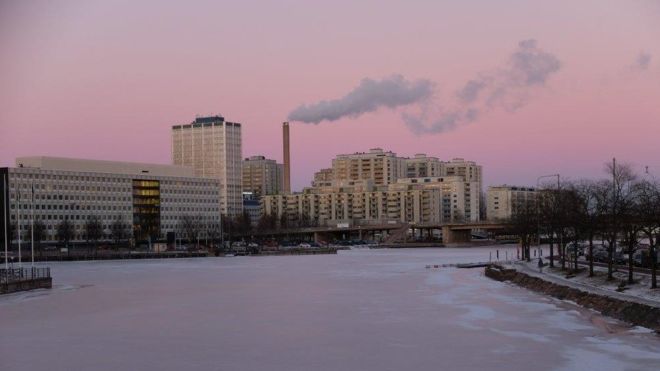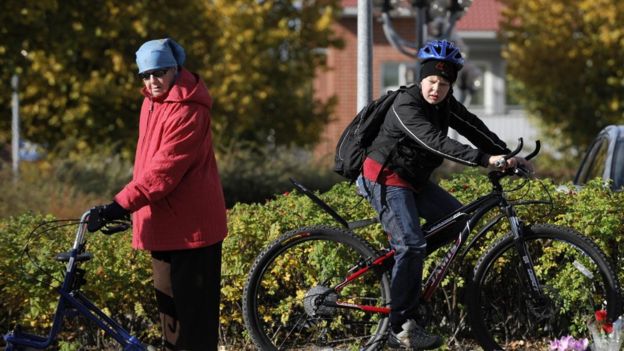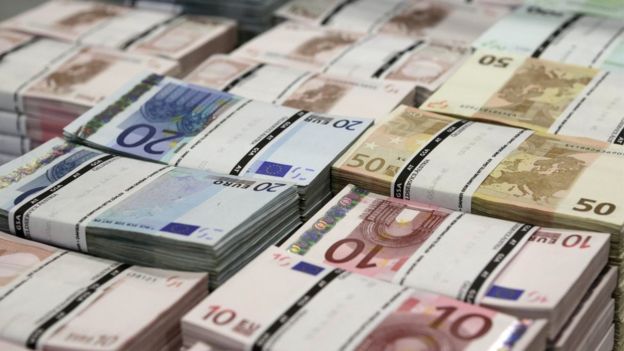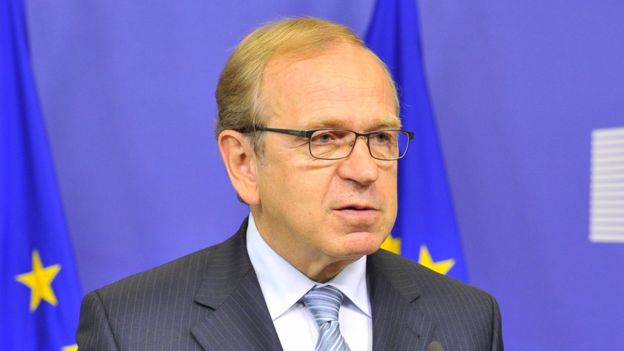Is Finland now ‘the sick man of Europe’?
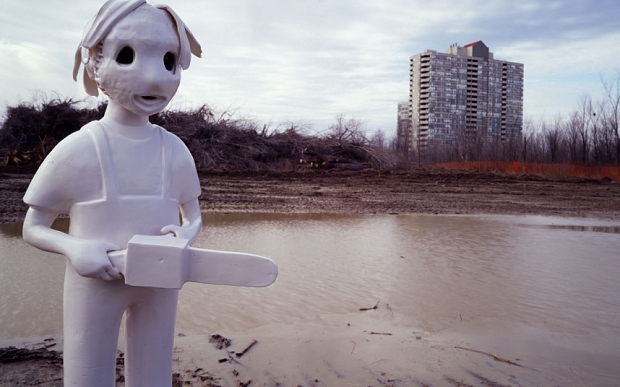

Mandatory Credit: Photo by Jefunne Gimpel/REX Shutterstock (5321589af)
A ceramic sculpture of a chainsaw murdering boy
Spooky moss sculptures, Helsinki, Finland — Oct 2015
FULL BODY: http://www.rexfeatures.com/nanolink/re1j An artist has created ceramic sculptures which grow moss, making the innocent and playful sculptures look creepy and almost sinister. Kim Simonsson, works at his home studio in Finland and has displayed his works in private exhibitions all over the world including cities such as New York, Paris, Berlin, Copenhagen, Stockholm and Helsinki.
That dismal description comes from the country's own Finance Minister, Alexander Stubb.
New figures for the economy's performance in 2015, showed that it managed to avoid a fourth consecutive year of declining economic activity. Even so, it was very lacklustre growth and the longer picture remains pretty bleak.
The broadest measure of that, GDP, is still about 7% below the high it reached at the end of 2007, just before the global financial crisis.
Most, though not all, eurozone countries have got back to those earlier levels and a bit above. Even one country that was bailed out, Ireland, is among those relatively strong performers.
Finland's disappointing performance has also shown up in the unemployment figures, which rose from 6.2% of the workforce in early 2008 to 9.5% in the most recent figures.
So who is to blame?
'Jobs took our jobs'
The slightly flippant answer is: the late Steve Jobs, founder of Apple. But there is a serious point behind that — well two actually, although it's not the whole story of Finland's economic troubles.
In 2014 Mr Stubb, who was the prime minister at the time, told a newspaper that: "Steve Jobs took our jobs."
Not literally of course. What he meant was that Apple products had created serious challenges for two very important Finnish industries.
One was forestry — in particular, paper. It's a huge industry with a long history in Finland. The country's extensive forests are not just pretty; they are a very valuable commercial resource.
But Finland has been affected by what an independent economic research agency in Helsinki (ETLA) called "the reduction of demand for print paper due to the substitution of print media by internet services". It's not just Apple's doing of course, but the company is a key player in that development.
Finland's other Apple-related casualty is Nokia, which incidentally began life as a paper producer in the 19th Century.
Nokia branched out and eventually became the world's biggest supplier of mobile phone handsets. But it failed to respond to the challenge presented by Apple's iPhone and other smartphones.
It's just one company, but a huge one that overshadowed a small economy. According to the ETLA report: "Its direct contribution accounts for 1/3 of the GDP decline and its shedding of employment for 1/5 of the reduction of total employment between 2008 and 2014."
The impact is even bigger if you include the wider technology sector of which Nokia is a part.
So there you have it. Finland's economic troubles are due to Steve Jobs and the business he created.
Well, no. There have been a few other things going on too.
Finland's economy
GDP in 2015: €207bn ($231bn; £150bn) — eighth biggest in the eurozone (Source: IMF)
GDP per capita: €37,893 ($42,195; £27,504) — fifth in the eurozone, just ahead of France and Germany (Source: IMF)
Population: 5.5 million — 10th in the eurozone
Two pillars of the economy have been in decline in recent years — the timber industry and Nokia
High-profile companies today include dairy producer Valio, Angry Birds maker Rovio, and Kone, which manufactures lifts and escalators
The country spends heavily on education, training and research — investment which delivers one of the best-qualified workforces in the world
Finland is the only Nordic EU member to use the euro as its national currency
There has been another external problem, this one supplied by one of Finland's neighbours, Russia. Not for the first time, trouble across the eastern border has made itself felt in the domestic Finnish economy.
The collapse of the Soviet Union in the early 1990s hit Finnish exports. So have the more recent problems in Russia, which were the result of lower oil prices and Western sanctions related to the crisis in Ukraine. Russia's trade retaliation against the EU has also hit Finland, as it banned some EU imports. To take one example, for the country's leading dairy business, Valio, that was a serious blow.
There are other issues that can't be blamed on bad luck descending from overseas. The population is ageing. That means a lower proportion of the population is working, generating wealth and paying income taxes.
There is also an issue with competitiveness. One measure is known as unit labour costs. According to data from the Organisation for Economic Co-operation and Development, that rose by 25% between 2007 (just before the crisis) and 2014.
Wages continued to rise after the crisis while productivity, the amount produced by each worker, declined.
The government is seeking to tackle these issues with a range of reforms to business, benefits and employment intended to reduce labour costs.
A related issue is the very large share of state spending in Finnish GDP — the largest in the OECD (which is made up mainly of rich countries). That partly reflects increased spending due to higher unemployment and an older population. It also means taxes are relatively high.
Currency union impact
The government's strategy for addressing competitiveness is sometimes called "internal devaluation", which means in essence taking steps to reduce costs for business. It's an alternative to devaluing the national currency to improve competitiveness, an option that is not available because Finland uses the euro.
It was widely recognised that one potential risk of a currency union was the loss of a flexible currency to respond to economic developments that affect different members differently — sometimes called idiosyncratic or asymmetric shocks.
So would Finland's economic problems have been any milder if there had been a national currency to devalue?
Perhaps. Exchange rates are determined by financial markets, but it is certainly possible that bad news about the economy would have weakened the currency and given something of a boost to competitiveness.
The ETLA report suggested things might have been different: "The weakness of growth in Finland can best be explained by a series of exceptional negative shocks in combination with a too weak capacity of the economy to improve its cost competitiveness in the absence of exchange rate flexibility."
It's a nuanced report. The conclusions of Tuomas Mallinen, an economist at Helsinki University, are more stark: "The main blame on our economic woes should be placed where it belongs, namely on the euro membership."
This view is rejected by the governor of the Bank of Finland, Erkki Liikanen, who sits on the European Central Bank committee that makes monetary policy decisions.
He told the Daily Telegraph: "If we had a little weaker Finnish markka (the national currency before the introduction of the euro), I wouldn't believe that Nokia would beat iPhones or that young people would suddenly start to read printed books and newspapers, thus creating demand for the products of Finnish paper mills. Our challenges are based on structural facts. An adjustment of our currency would not make up for those challenges."
Finland continues to struggle with a battery of forces that have hit its economy since the international crisis.
Still, it's worth recalling that, as the OECD said in a recent assessment, "Finland enjoys a high level of income and well-being" and despite the rise in unemployment "social safety nets keep income inequality low".
It's just that if Finland had adjusted better to all the shocks, incomes would probably be quite a bit higher.
Политика конфиденциальности | Правила пользования сайтом
